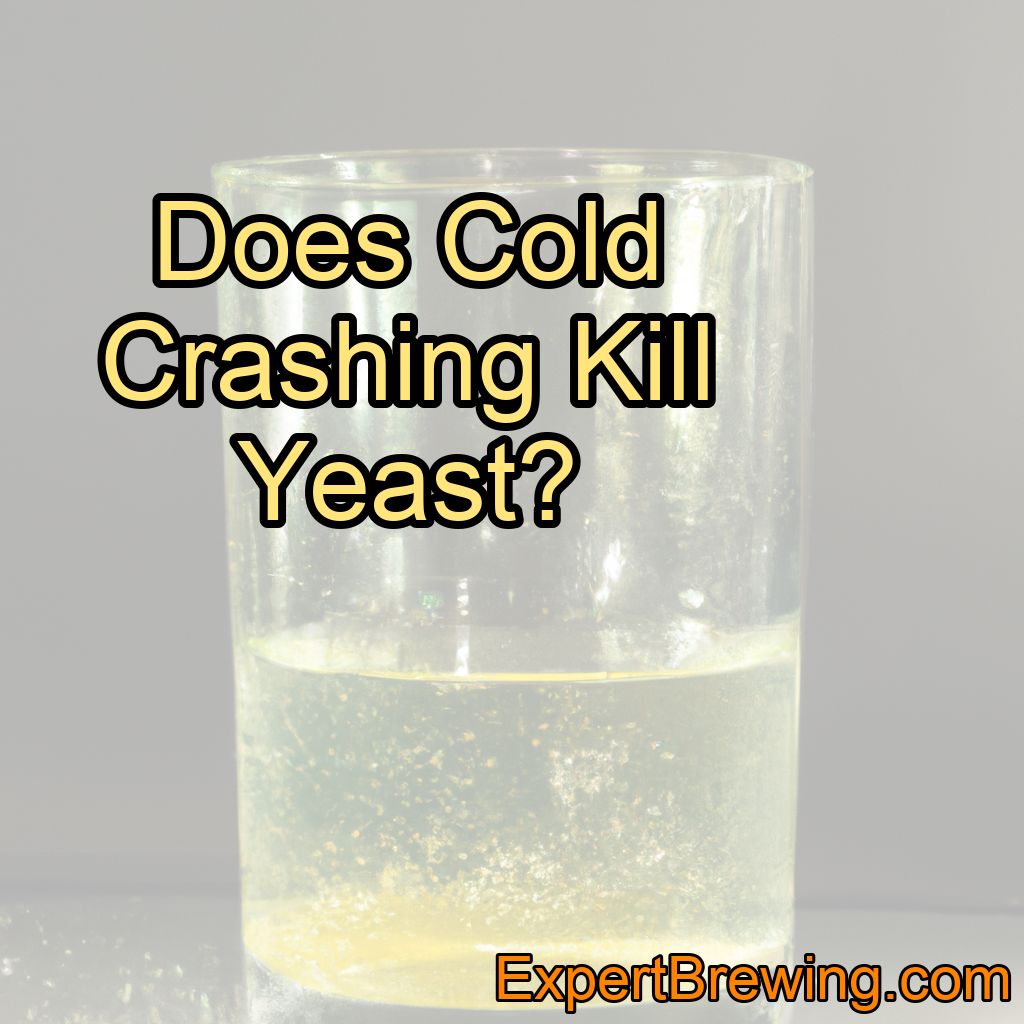In this blog post, I will share my personal experiences and knowledge about bottle conditioning after cold crashing. As an experienced home brewer, I have had my fair share of successes and failures when it comes to brewing and conditioning beer. One of the most common questions I get asked is, “Can you bottle condition after cold crashing?” Let’s dive in and explore this topic to provide a clear and concise answer.
What is Cold Crashing?
Cold crashing is the process of rapidly cooling down your beer after fermentation has completed. This is typically done by placing the fermenter in a refrigerator or using a glycol chiller. The purpose of cold crashing is to encourage yeast, proteins, and other particulates to settle out of the beer, resulting in a clearer and cleaner final product.
Why Bottle Condition?
Bottle conditioning is the process of allowing your beer to naturally carbonate in the bottle by adding a small amount of priming sugar before sealing the bottle. This provides the remaining yeast in the beer with enough sugar to produce a small amount of CO2, which then carbonates the beer. This process can improve the overall flavor and stability of the beer, as well as provide a natural and gentle carbonation that many brewers prefer.
Can You Bottle Condition After Cold Crashing?
Yes, you can bottle condition after cold crashing. However, it is essential to ensure that there is still enough yeast present in the beer to facilitate the carbonation process. Cold crashing can cause a significant amount of yeast to settle out of the beer, but there will still be enough yeast in suspension to carbonate the beer during bottle conditioning.
Potential Issues with Bottle Conditioning After Cold Crashing
While it is possible to bottle condition after cold crashing, there are a few potential issues that can arise:
1. Slower Carbonation: Due to the reduced yeast population, the carbonation process may take longer than usual. This can be mitigated by allowing the bottles to condition at a slightly higher temperature to encourage yeast activity.
2. Incomplete Carbonation: In some cases, there may not be enough yeast remaining in suspension to fully carbonate the beer. This can result in under-carbonated or flat beer. To avoid this issue, you can add a small amount of fresh yeast to the bottling bucket along with the priming sugar.
3. Excess Sediment: Even with cold crashing, some sediment may still be present in the beer. This can lead to a small amount of sediment at the bottom of the bottles, which can be unappealing to some drinkers.
Tips for Successful Bottle Conditioning After Cold Crashing
To ensure successful bottle conditioning after cold crashing, consider the following tips:
1. Gently rouse the yeast: Before bottling, gently swirl the fermenter to resuspend some of the yeast back into the beer. Be careful not to introduce oxygen into the beer during this process.
2. Use a bottling bucket: Transfer the beer to a separate bottling bucket with a spigot, leaving behind the majority of the sediment in the fermenter. This will make it easier to bottle the beer without disturbing the settled yeast.
3. Monitor the temperature: Ensure that the bottles are conditioning at an appropriate temperature to encourage yeast activity and proper carbonation.
4. Be patient: Allow extra time for the bottles to carbonate, as the process may take longer than usual due to the reduced yeast population.
Adding Fresh Yeast for Bottle Conditioning
If you are concerned about the amount of yeast remaining in your beer after cold crashing, you can add a small amount of fresh yeast to the bottling bucket to ensure proper carbonation. This can be especially helpful for high-alcohol beers or beers that have been aged for an extended period, as the yeast may become less viable over time.
When adding fresh yeast, choose a neutral strain that will not impart any additional flavors to the beer. Rehydrate the yeast according to the manufacturer’s instructions, and then add it to the bottling bucket along with the priming sugar. The fresh yeast will help ensure that your beer carbonates properly during bottle conditioning.
Experiment and Adjust
As with all aspects of homebrewing, the key to success is experimentation and adjustment. If you find that your beers are not carbonating properly after cold crashing, try adjusting your process by rousing the yeast, adding fresh yeast, or altering the conditioning temperature. Through trial and error, you will find the best method for your specific brewing setup and beer style.
Conclusion
Yes, you can bottle condition after cold crashing. As long as there is enough yeast present in the beer, the bottle conditioning process should still be successful. However, it is essential to monitor the temperature, be patient with the carbonation process, and consider adding fresh yeast if necessary. By following the tips and advice outlined in this blog post, you can ensure that your beers are clear, properly carbonated, and delicious.
Here are the key facts to remember:
1. Cold crashing helps to clear your beer by settling yeast and proteins.
2. Bottle conditioning provides natural carbonation and can improve flavor and stability.
3. You can bottle condition after cold crashing, but ensure there is enough yeast present.
4. Be prepared for slower carbonation due to the reduced yeast population.
5. Incomplete carbonation can be avoided by adding fresh yeast during bottling.
6. Gently rouse the yeast before bottling to resuspend some yeast in the beer.
7. Use a bottling bucket to transfer the beer and leave sediment behind.
8. Monitor the temperature during bottle conditioning for optimal yeast activity.
9. Be patient and allow extra time for carbonation if necessary.
10. Experiment and adjust your process for the best results.
FAQs
Does cold crashing affect carbonation?
Cold crashing can affect carbonation in beer as it can cause the dissolved CO2 to come out of solution and form bubbles, resulting in a loss of carbonation. However, this can be mitigated by ensuring that the beer is fully carbonated before cold crashing and keeping it at a consistent temperature during the process.
Can you reuse yeast after cold crashing?
Yes, you can reuse yeast after cold crashing. However, it is important to properly harvest and store the yeast to ensure its viability and effectiveness in future batches.
Should you cold crash a yeast starter?
Yes, it is recommended to cold crash a yeast starter to help settle out the yeast and clarify the liquid before decanting the spent wort. This can help improve the quality of the final beer by reducing the amount of trub and yeast sediment that ends up in the fermenter.
Does temperature affect carbonation in beer?
Yes, temperature does affect carbonation in beer. Lower temperatures increase the solubility of carbon dioxide in beer, resulting in higher carbonation levels. Conversely, warmer temperatures decrease the solubility of carbon dioxide, leading to lower carbonation levels.
What does cold crashing do to beer?
Cold crashing is a process of rapidly cooling beer to near-freezing temperatures to encourage yeast and other sediment to settle to the bottom of the fermenter. This helps to clarify the beer and improve its appearance.
Can I reuse yeast after brewing?
Yes, you can reuse yeast after brewing. However, it’s important to properly store and maintain the yeast to ensure its viability for future use. Additionally, reusing yeast can impact the flavor and quality of your beer, so it’s important to consider the potential effects before doing so.




